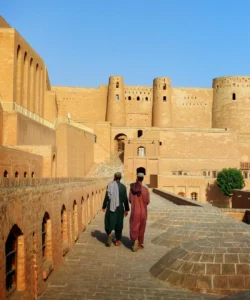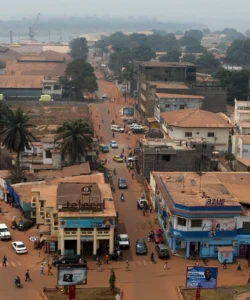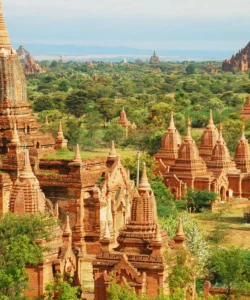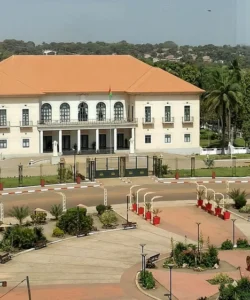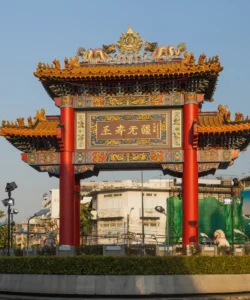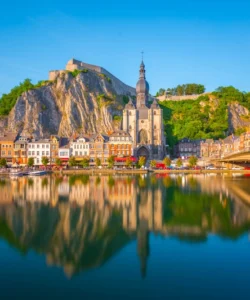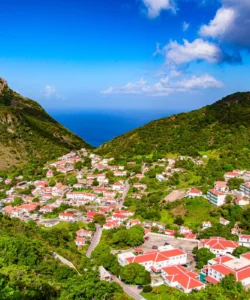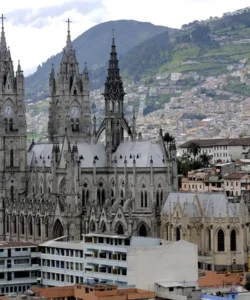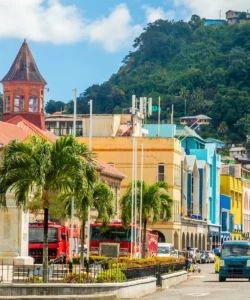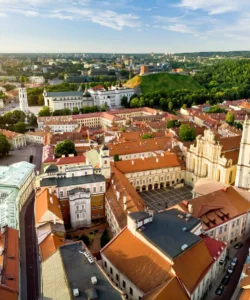Bolivia is a landlocked country in the heart of South America, known for its incredible geographical diversity, unique indigenous culture, and dramatic landscapes ranging from the high Andes mountains to vast Amazonian lowlands. It has two capitals, one constitutional and one administrative.
Listen to an introduction about Bolivia
![]()
Area and Population:
Bolivia covers an area of approximately 1,098,581 km² (424,164 sq mi). Its population is estimated to be around 12.5 million inhabitants (as of 2024).
Language:
Bolivia is one of the most linguistically diverse countries in the world. Spanish is the official language, but it also recognizes 36 indigenous languages as official, including Quechua, Aymara, and Guarani, which are widely spoken, especially in rural areas and their respective regions.
Currency:
The currency of Bolivia is the Bolivian Boliviano (BOB).
Religion:
The predominant religion in Bolivia is Catholicism, a legacy of Spanish colonization. Protestantism, particularly Evangelical denominations, has a significant and growing presence. Indigenous spiritual beliefs are also strong and often syncretized with Christian practices, reflecting the country’s rich cultural tapestry.
Capitals:
Bolivia has two capitals:
- Sucre: The constitutional and judicial capital, located in the central-south, known for its beautiful colonial architecture and often called the “White City.” It is a UNESCO World Heritage site.
- La Paz: The administrative and governmental capital, as well as the de facto capital, located at an astounding elevation of around 3,650 meters (11,975 feet) above sea level, making it the highest de facto capital city in the world. It is a bustling metropolis nestled in a bowl-shaped valley of the Andes.
Major Cities:
Besides La Paz and Sucre, other significant cities in Bolivia include:
- Santa Cruz de la Sierra: The largest and most economically dynamic city in Bolivia, located in the eastern lowlands, a hub for agriculture and commerce.
- Cochabamba: Known as the “Garden City” or “City of Eternal Spring,” located in a fertile valley in the central region.
- Potosí: A historic mining city high in the Andes, once one of the wealthiest cities in the world due to its silver mines. It is a UNESCO World Heritage site.
- Oruro: A mining city known for its vibrant and elaborate Carnival, a UNESCO Intangible Cultural Heritage.
- Tarija: A city in the south known for its wine production.
Attractions and Wonders:
Bolivia’s diverse geography and rich cultural heritage offer unique and often breathtaking attractions:
- Salar de Uyuni: The world’s largest salt flat, located in the southwest, a surreal landscape of vast white plains, hexagonal patterns, and “islands” of cacti. It offers incredible photographic opportunities, especially when covered in a thin layer of water.
- Lake Titicaca: The highest navigable lake in the world, shared with Peru. The Bolivian side offers visits to Copacabana and Isla del Sol (Island of the Sun), believed to be the birthplace of the Inca sun god.
- Uyuni Salt Flat Desert Tour: Multi-day tours from Uyuni often include not just the salt flat but also colorful lagoons (like Laguna Colorada and Laguna Verde), geysers, hot springs, and unique rock formations, showcasing the stunning Altiplano scenery.
- Death Road (Yungas Road): A notoriously dangerous but exhilarating downhill cycling route from La Paz to Coroico, popular among adventure tourists.
- La Paz: Explore its vibrant Witches’ Market (Mercado de las Brujas), take a cable car (Mi Teleférico) for panoramic views of the city and surrounding mountains, and visit the historic city center.
- Potosí: Wander through its colonial streets, visit the Casa Nacional de la Moneda (National Mint Museum), and if possible, take a challenging but historically significant tour of the Cerro Rico (Rich Hill) silver mines.
- Sucre: Admire its pristine white colonial architecture, charming plazas, and numerous churches.
- Madidi National Park: One of the most biodiverse areas in the world, located in the Amazon basin, offering opportunities for jungle tours, wildlife viewing (jaguars, monkeys, macaws), and cultural immersion with indigenous communities.
- Tiwanaku: Ancient pre-Inca ruins near Lake Titicaca, a UNESCO World Heritage site, home to impressive megalithic structures like the Sun Gate.
- Amboró National Park: A highly diverse park in the eastern Andes, where Andean, Amazonian, and Chaco ecosystems converge, known for its cloud forests and birdlife.
Architecture:
Bolivian architecture is a fascinating blend of indigenous and European influences:
- Colonial Architecture: Most evident in Sucre and Potosí, featuring Spanish colonial Baroque and Neoclassical styles with distinctive white lime-washed buildings (Sucre) or stone and adobe constructions (Potosí).
- Andean Baroque: A unique style prominent in colonial churches, particularly in the Altiplano, incorporating indigenous motifs and symbols into European designs.
- Aymara Cholet Architecture: In La Paz and El Alto, architect Freddy Mamani has popularized a vibrant, colorful, and unique architectural style for grand homes and event halls, blending traditional Aymara patterns with modern, almost futuristic elements.
- Modern Architecture: Newer urban developments in cities like Santa Cruz and the newer parts of La Paz feature contemporary designs.
Roads:
Bolivia’s road infrastructure is improving but can be challenging, especially in the mountainous and lowland regions. Paved roads connect major cities, but many routes to smaller towns and natural attractions are unpaved, gravel, or dirt roads that can become difficult or impassable during the rainy season (November to March). Bus travel is the most common form of intercity transport, often involving long journeys over varied terrain.
Hotels:
Bolivia offers a range of accommodation. In major cities like La Paz, Santa Cruz, and Sucre, you’ll find international chain hotels, boutique hotels, and numerous mid-range and budget-friendly hotels and hostels. In tourist hubs like Uyuni, options are more basic but cater to the high volume of visitors. Eco-lodges are available in national parks and the Amazon basin, while charming guesthouses can be found in smaller towns. Unique experiences include salt hotels near Salar de Uyuni.
Restaurants and Cuisine:
Bolivian cuisine is hearty and often features potatoes, corn, quinoa, and various meats, with significant indigenous influences.
- Key Dishes:
- Salteñas: A beloved savory baked pastry, similar to a juicy empanada, typically filled with meat (beef or chicken), vegetables, potatoes, and often a sweet or spicy sauce. A popular breakfast or mid-morning snack.
- Silpancho: A traditional dish from Cochabamba, consisting of a thin slice of breaded and fried beef, served over rice and potatoes, topped with a fried egg, and often a relish of tomatoes, onions, and locoto (spicy pepper).
- Pique Macho: A large, hearty platter of chopped beef, sausages, fries, onions, locoto, and hard-boiled eggs, usually served for sharing.
- Plato Paceño: A simple but flavorful dish from La Paz, with broad beans, potato, corn on the cob, and cheese, often served with grilled beef.
- Sopas (Soups): Various hearty soups are common, such as Sopa de Maní (peanut soup).
- Trucha (Trout): Fresh trout from Lake Titicaca is a popular dish.
- Api: A traditional hot, thick drink made from purple corn, often served with buñuelos (fried dough fritters).
- Quinoa: A staple grain, often used in soups, salads, and other dishes.
- Restaurants: La Paz, Santa Cruz, and Cochabamba offer a variety of dining experiences, from traditional Bolivian restaurants (some offering live music) to international cuisine. In smaller towns, eateries typically serve local, hearty fare. Food markets are excellent places to try street food and local snacks.

